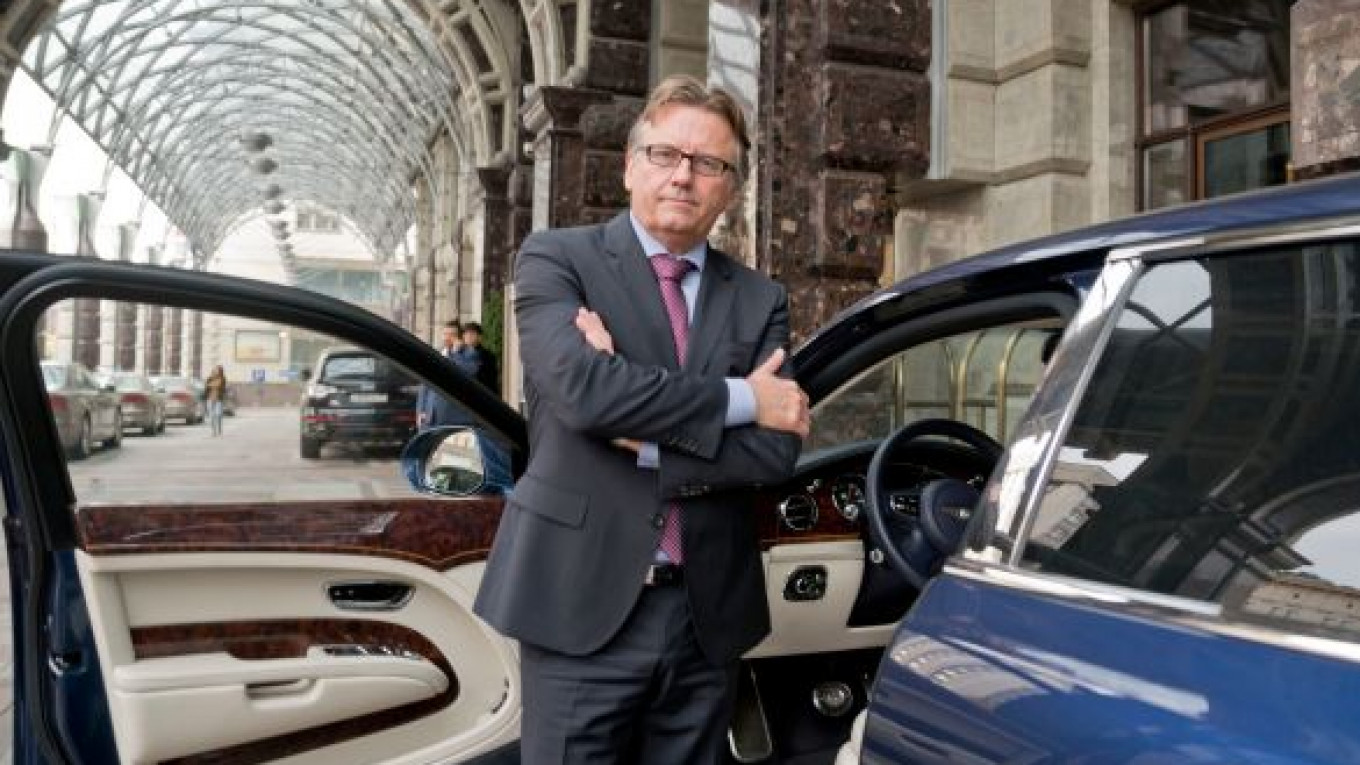Asked about his favorite movie, Guenter Behringer, who is in charge of sales at Bentley Motors in Russia, named “Casino,” a Hollywood motion picture set in Las Vegas, with its glitter and glamour and where the rich toss money to the wind.
Targeting customers that can cough up about a half million dollars for a car, Bentley likes to present its products with pomp as well. Its latest arrival to the local market, the Flying Spur model, came in June with a statement for the press that brimmed with words like “exclusive,” “exquisite,” and “iconic.”
With the number of millionaires in the country estimated at 180,000 in 2012 — the same number as the previous year but with a 17 percent greater net worth — it is no wonder that Bentley and its competitors, like Jaguar and Rolls-Royce, are investing in their sales and marketing efforts here.
Though overall car sales are declining, luxury brands like Jaguar show resilience. The Association of European Businesses, which tracks the market, said earlier this month that Jaguar posted 12 percent growth from January to October, managing to sell 1,400 cars. The group did not have numbers for Bentley and Rolls-Royce.
Behringer has learned to read the tastes of customers well. Since opening the first showroom in Moscow in 2003, there are more than 2,600 registered Bentley Motor cars on the Russian roads. Last year, 224 new Bentleys were sold here, one of the best results in the segment.
“Being a representative of luxury car brands in Russia, you need to understand the Russian consumer behavior and mentality. As I have noticed, wealthy Russians do not like understatement,” Behringer said. “Unlike Germans, they are not shy to show their success in business.”
He has also observed some of the side effects of the deficit lifestyle of the former command economy.
“You have to deliver on time, as Russians tend to spend their money today rather than tomorrow. Maybe, it is deep in their soul. In the past, there was not much abundance of goods and now they enjoy spending money.”
This leads to primarily sales from stock. Just a few customers are willing to wait for five or six months for their car to be built, Behringer said. “That is why our important task is to find out what the Russian taste is, then get as close as possible to it in pre-customizing their cars.”
Russians have changed their tastes about the color of Bentleys, Behringer said. They now prefer more elegant and subtle colors, such as white, beige, grey, black and brown, he said. Until about 2006, local customers liked flashier colors.
Behringer has a long track record of dealing with the Russian automotive market, which has allowed him to build up the sensitivities he needs to succeed.
“I first came to Russia in 1990 to work on the Audi stand at the first Moscow motor show after perestroika. At that time, there were no traffic problems, only Ladas and Volgas were seen on the streets and there was almost no advertising in the city.”
Though he wound up in Audi’s head office in Germany in the late ‘90s, he kept his focus on this market, enjoying the thrill of its rapid growth. With the integration of Bentley and Lamborghini into the Volkswagen Group, Behringer decided to satisfy his long term fascination with Russia and relocate to Moscow in 2011.
Despite the success in sales, he admits there is ground to cover in spreading knowledge about the history of high-end brands.
“Many customers, who I spoke with here, do not know what Bentley stands for. That was a new experience for me. Whenever I ask them, “Why do you think Bentley is so expensive?” they say, “Because it is the best.”
“Why do you think it is the best?”
They answer, “Because it is very expensive.”
That said, the market looks alluring to the company. Bentley announced recently it would start selling an ultra-luxury SUV here in 2016. In 2005 only 12 percent of all new registered vehicles in Russia were SUVs, while in 2013 more than 35 percent are SUVs, and the ratio is growing further, Behringer said.
Although he is a dyed-in-the-wool car aficionado, he appreciates the improvements that the city is making to benefit those not behind the wheel.
“I was very much surprised by the increasing number of pedestrian-only streets in the city center,” Behringer said. “One of my favorite ones is Nikolskaya Ulitsa. It is so well done it could be in Paris, or elsewhere in Europe.”
Contact the author at [email protected]
A Message from The Moscow Times:
Dear readers,
We are facing unprecedented challenges. Russia's Prosecutor General's Office has designated The Moscow Times as an "undesirable" organization, criminalizing our work and putting our staff at risk of prosecution. This follows our earlier unjust labeling as a "foreign agent."
These actions are direct attempts to silence independent journalism in Russia. The authorities claim our work "discredits the decisions of the Russian leadership." We see things differently: we strive to provide accurate, unbiased reporting on Russia.
We, the journalists of The Moscow Times, refuse to be silenced. But to continue our work, we need your help.
Your support, no matter how small, makes a world of difference. If you can, please support us monthly starting from just $2. It's quick to set up, and every contribution makes a significant impact.
By supporting The Moscow Times, you're defending open, independent journalism in the face of repression. Thank you for standing with us.
Remind me later.






